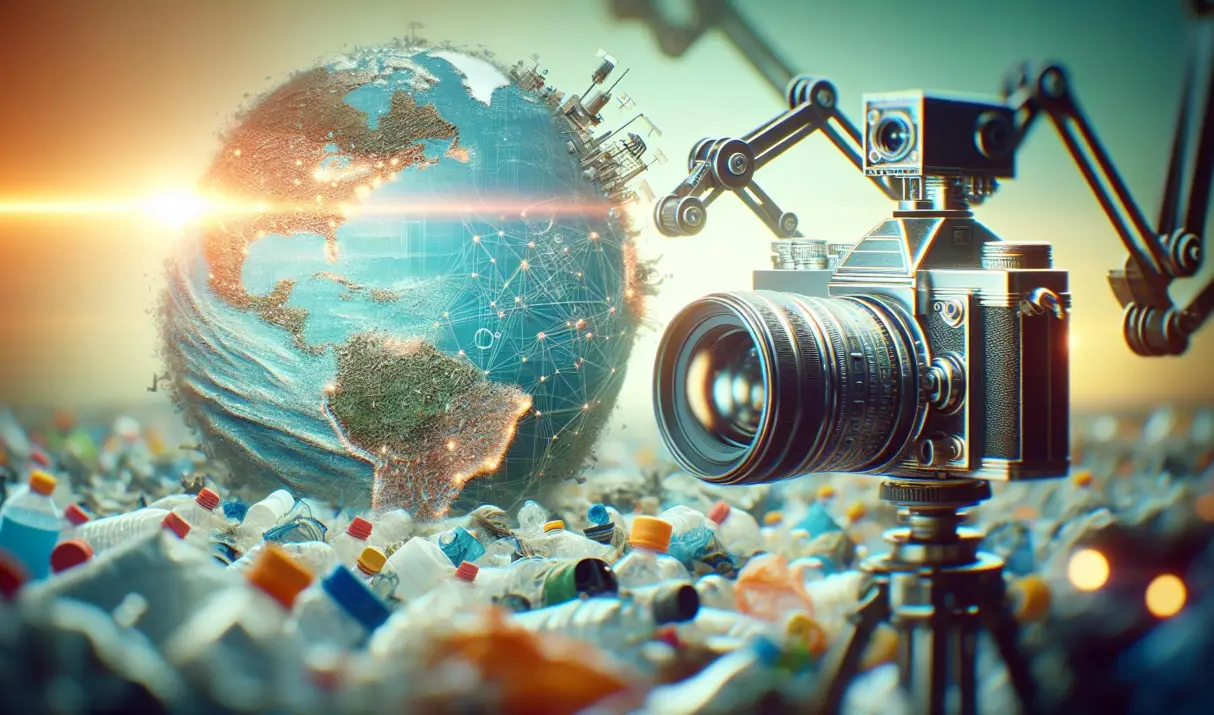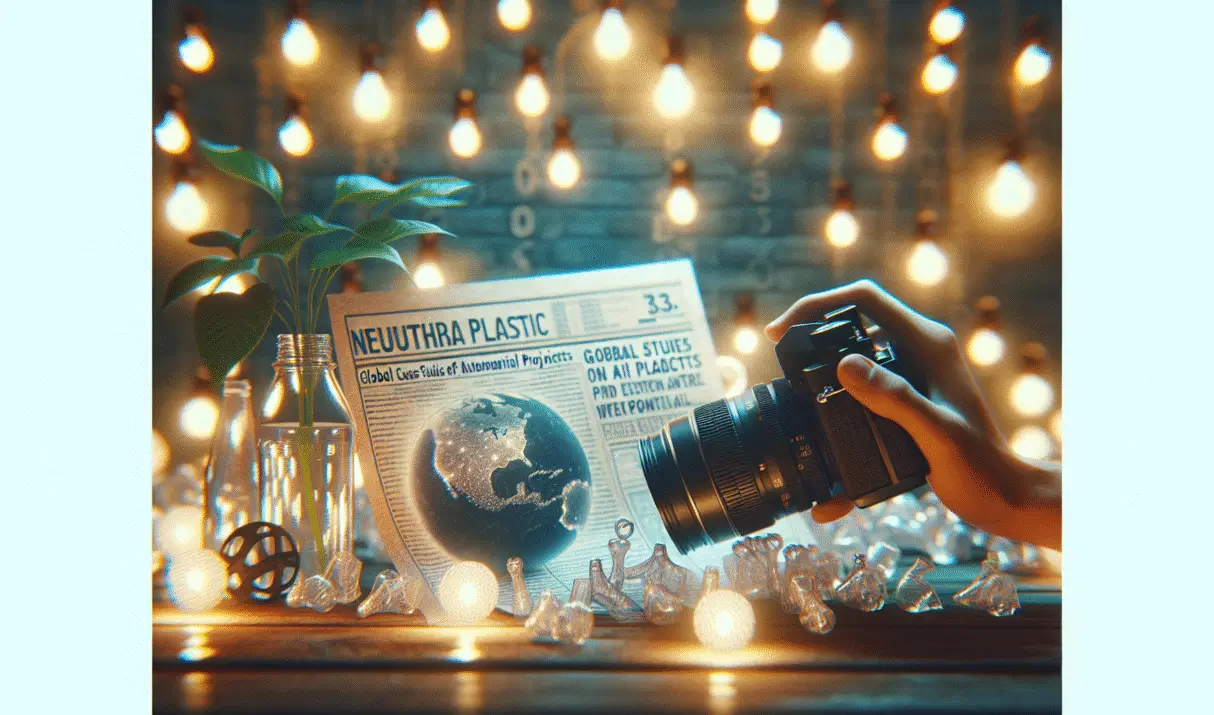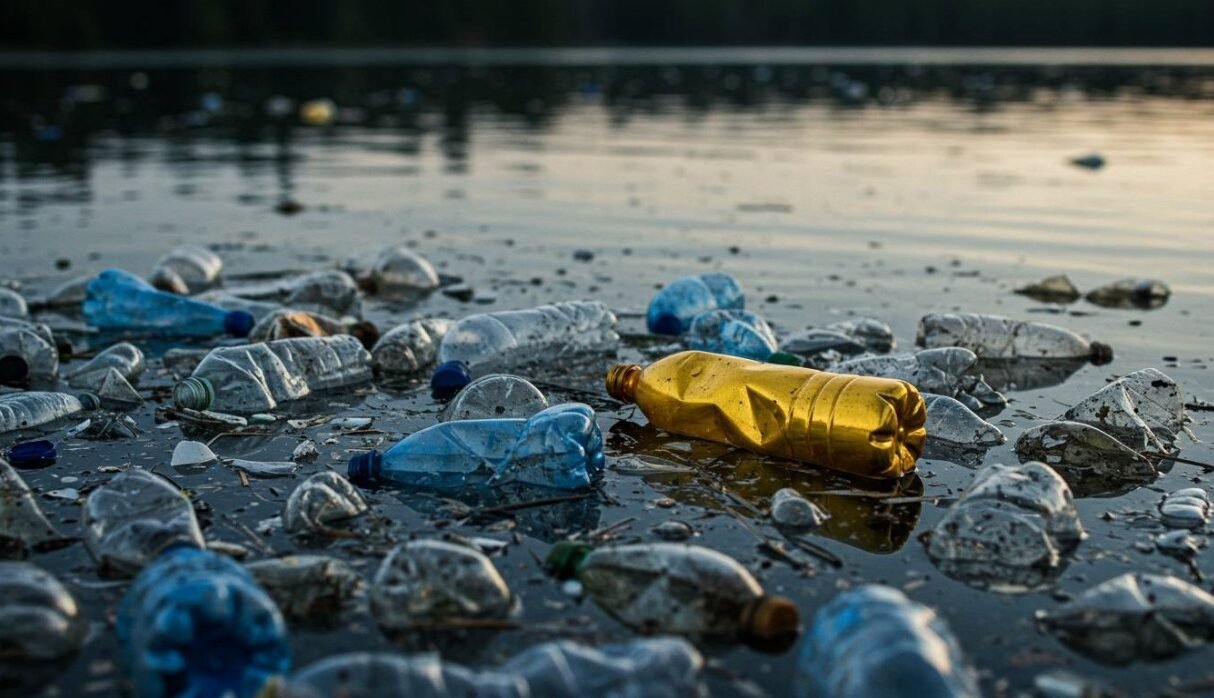The Cost of Plastic Neutral Certification: A Breakdown for Businesses In today’s environmentally conscious market, many businesses are striving to reduce their plastic footprint through Plastic Neutral Certification. This certification signifies that a company either offsets or eliminates the equivalent amount of plastic waste it produces, promoting a more sustainable future. However, obtaining this certification involves various costs that businesses must carefully consider before committing to the process. Understanding Plastic Neutral Certification Plastic Neutral Certification is a recognition awarded to organizations that balance out their plastic usage by supporting initiatives such as plastic waste collection, recycling efforts, or the use of alternative materials. This certification not only enhances a company’s brand image but also contributes positively to the environment. However, achieving and maintaining this status involves several financial components. Initial Assessment and Audit Costs Before certification, a company must assess its total plastic usage. This involves conducting a thorough plastic footprint audit which can range from a simple internal assessment to a comprehensive third-party audit. Costs here vary depending on the complexity and size of the business, typically ranging from $1,000 to $10,000. This foundational step is crucial to establish the baseline for offsetting plastic waste. Offsetting Plastic Waste The core expense in obtaining plastic neutral status comes from the actual plastic offsetting. This usually involves funding projects that collect and recycle or responsibly dispose of plastic waste equal to the company’s footprint. Pricing for offsets can vary significantly but averages around
Offsetting Flexible Packaging Waste: Plastic Neutrality for Hard-to-Recycle Materials Flexible packaging, characterized by its lightweight and versatile nature, has become an increasingly popular choice across industries, from food and beverage to pharmaceuticals. However, despite its convenience and efficiency, flexible packaging poses a significant challenge when it comes to waste management due to its complex multi-layer structure, which makes it notoriously hard to recycle. As sustainability becomes a critical focus for companies and consumers alike, the concept of plastic neutrality has emerged as a promising approach to offset the environmental impact of these materials. The Challenge of Recycling Flexible Packaging Unlike rigid plastics, which can often be sorted and processed more easily in recycling facilities, flexible packaging typically combines different polymers and additives that complicate mechanical recycling processes. The presence of multiple layers bonded together results in low recyclability rates and frequently leads to these materials being diverted to landfills or incineration. Consequently, this contributes to plastic pollution, undermining broader efforts to reduce environmental harm. Understanding Plastic Neutrality Plastic neutrality is a strategy where companies or individuals take responsibility for the plastic waste they generate by funding initiatives that remove or recycle an equivalent amount of plastic from the environment. While this was initially popularized in the context of single-use rigid plastics, the concept has expanded to include hard-to-recycle materials such as flexible packaging. Achieving plastic neutrality involves a combination of reducing plastic use, improving product design for recyclability, and investing in waste recovery projects elsewhere. Strategies for Offsetting Flexible Packaging Waste Offsetting the impact of flexible packaging requires innovative and collaborative efforts: Investment in Advanced Recycling Technologies: Chemical recycling and solvent-based recovery are emerging solutions that can break down multi-layer flexible packaging into reusable raw materials. Support for Collection and Cleanup Programs: Funding local and global programs focused on removing plastic waste from waterways and oceans helps counterbalance the environmental footprint of flexible packaging. Collaboration with Stakeholders: Partnerships with waste management companies, NGOs, and policymakers foster more systematic approaches to plastic waste reduction and recovery. Consumer Engagement and Education: Informing consumers about responsible disposal methods further enhances waste diversion efforts. The Road Ahead: Embracing Responsibility to Drive Change While truly eliminating all flexible packaging waste remains a complex goal, companies committed to plastic neutrality demonstrate leadership by acknowledging the problem and actively participating in solutions beyond their direct control. This accountability not only improves environmental outcomes but also builds trust with increasingly eco-conscious consumers. By adopting offsetting methods and promoting innovation in waste management, the plastics industry can move toward a future where flexibility and sustainability coexist.
What Does “Plastic Neutral” Really Mean? A Clear Definition In recent years, the term “plastic neutral” has gained popularity as businesses and consumers strive for more sustainable practices. But what does being plastic neutral truly entail? While it sounds simple, the concept carries specific implications and responsibilities that go beyond just reducing plastic use. At its core, plastic neutrality means that for every amount of plastic a company or individual uses, they take equivalent action to remove or offset that same amount of plastic from the environment. This is similar to the idea of carbon neutrality, where carbon emissions are balanced by reductions or offsets. The Key Components of Plastic Neutrality 1. Measurement: The first step toward plastic neutrality involves measuring the total amount of plastic used or produced. This includes all plastic consumed throughout the supply chain, packaging, shipping, and end-consumer use. 2. Reduction: While offsetting is a big part of being plastic neutral, actively reducing plastic use is equally important. Companies strive to minimize plastic content through alternative materials, improved design, or reuse strategies. 3. Offsetting: To balance out their plastic footprint, companies invest in initiatives that prevent plastic pollution or clean up existing plastic waste. This may involve supporting recycling programs, funding plastic waste collection projects, or contributing to innovations in plastic alternatives. Why Plastic Neutral Is Not the Same as Zero Plastic Use A common misconception is that being plastic neutral means a business or individual produces no plastic waste. However, the term acknowledges that completely eliminating plastic can be difficult with current technologies and infrastructures. Instead, plastic neutrality focuses on balancing the plastic impact rather than eliminating it altogether. The Impact and Criticism of Plastic Neutrality While plastic neutrality offers a positive step toward responsibility, some critics argue that it can encourage continued reliance on single-use plastics under the guise of offsetting. Therefore, it’s essential for organizations to also prioritize plastic reduction and sustainable alternatives alongside offset efforts. Conclusion In summary, being plastic neutral means actively balancing out one’s plastic usage by measuring, reducing, and offsetting the plastic released into the environment. It is an important concept in the movement toward sustainability but should be seen as one piece of a larger strategy aimed at reducing overall plastic pollution for a healthier planet.
Common Challenges Facing Plastic Neutrality Implementation Worldwide Achieving plastic neutrality has become an important goal in the global effort to reduce plastic pollution and its detrimental environmental impacts. Plastic neutrality refers to a state where the amount of plastic waste generated is offset by an equivalent amount of plastic removed or recycled, creating a net-zero effect. While the concept is promising, its implementation across various regions faces numerous challenges. Lack of Infrastructure for Plastic Waste Management One of the most significant hurdles is the insufficient infrastructure for collection, sorting, and recycling of plastic waste, especially in developing countries. Without proper facilities, much plastic ends up in landfills, oceans, or informal disposal sites. Building and maintaining waste management infrastructure requires substantial investment and technological expertise, which may be lacking in many areas. Inconsistent Policy and Regulatory Frameworks The absence of uniform policies and regulation across countries complicates the implementation of plastic neutrality. While some nations have introduced strict laws to limit single-use plastics and encourage recycling, others still lack comprehensive regulations. This inconsistency leads to challenges in cooperation, enforcement, and creating global standards. Complexity of Plastic Supply Chains Plastic materials travel through complex supply chains involving multiple stakeholders such as manufacturers, distributors, consumers, and waste processors. Tracking the production, usage, and disposal to achieve plastic neutrality is difficult due to fragmented and opaque supply chains. Ensuring accountability across all levels remains a major challenge. Economic Barriers and Market Dynamics The economics surrounding plastic recycling and offset programs often pose a challenge. The cost of collecting and recycling plastic waste can be high compared to producing new plastic, especially when oil prices are low. This price discrepancy can disincentivize companies from investing in sustainable alternatives or offsetting initiatives. Additionally, low consumer awareness and demand for recycled products can hinder market growth. Variability in Plastic Types and Recycling Technologies Not all plastics are created equal; there are various types such as PET, HDPE, PVC, and others, each requiring different handling and recycling processes. The variation in plastic composition complicates recycling efforts. Moreover, current technologies do not effectively recycle many plastic types, leading to significant portions of waste remaining unrecycled. Measurement and Verification Difficulties Implementing plastic neutrality relies heavily on accurately measuring plastic footprints and verifying offsets. However, the lack of standardized measurement methodologies and transparent reporting mechanisms makes it difficult to validate claims. Without credible verification, plastic neutrality efforts risk being perceived as superficial or “greenwashing.” Conclusion While the ambition to achieve plastic neutrality is commendable and necessary for environmental sustainability, the path forward is fraught with challenges. Addressing infrastructure deficits, harmonizing regulations, enhancing supply chain transparency, resolving economic issues, advancing recycling technologies, and establishing robust measurement practices are critical to making plastic neutrality a global reality.
Global Plastic Action Partnership (GPAP) and National Platforms Driving Neutrality The increasing threat of plastic pollution has galvanized international efforts to seek sustainable solutions. One of the most significant initiatives in this regard is the Global Plastic Action Partnership (GPAP), an innovative platform designed to mobilize partnerships and foster coordinated action against plastic waste worldwide. Through collaboration with governments, businesses, and civil society, GPAP aims to create impactful strategies that drive plastic neutrality, reducing environmental harm and promoting a circular economy. What is the Global Plastic Action Partnership? Launched by the World Economic Forum in 2018, the GPAP serves as a multi-stakeholder platform that facilitates alignment among diverse actors addressing plastic pollution. At its core, GPAP focuses on catalyzing action by providing expertise, funding, and a framework to implement national-level solutions. This global initiative stands out for its emphasis on supporting developing countries in building robust systems to manage plastic waste — from collection and recycling to policy and market development. The Role of National Platforms A critical mechanism through which GPAP achieves its goals is the establishment and support of National Platforms. These platforms act as country-specific hubs, uniting governments, the private sector, NGOs, and communities to develop and execute comprehensive plastic action plans. By tailoring strategies to national contexts, these platforms foster ownership and accountability while ensuring solutions are practical and effective. For instance, countries like Indonesia, Nigeria, and Ghana have benefited greatly from National Platforms under GPAP’s guidance. These platforms facilitate dialogue, fundraising, and technical assistance, enabling countries to set measurable goals toward plastic neutrality — where the amount of plastic waste collected or managed equals or exceeds the amount generated. Driving Plastic Neutrality Through Collaborative Efforts Plastic neutrality represents a significant milestone in combating pollution, but it requires integrated efforts across the value chain. National Platforms, backed by GPAP, work on multiple fronts, including: Policy development: Supporting governments to enact regulations that reduce single-use plastics and incentivize sustainable alternatives. Infrastructure improvement: Enhancing waste management systems to increase collection and recycling rates. Public awareness: Promoting education campaigns to change consumer behavior and encourage responsible disposal. Private sector engagement: Mobilizing companies to adopt circular business models and invest in innovation. The combined efforts of these actors amplify the impact, enabling countries to achieve tangible reductions in plastic leakage into the environment. Conclusion The Global Plastic Action Partnership and its network of National Platforms exemplify how collaborative, multi-stakeholder initiatives can drive meaningful progress toward global sustainability goals. By empowering nations to implement context-specific solutions and coordinate across sectors, GPAP is helping to turn the tide on plastic pollution. Moving forward, expanding these platforms and strengthening partnerships will be crucial to achieving long-term plastic neutrality and safeguarding the planet for future generations.
Case Studies: Global Examples of Corporate Plastic Neutral Projects and Their Impact In recent years, the rising global concern over **plastic pollution** has pushed corporations to adopt sustainable practices aimed at reducing their environmental footprint. Among these efforts, **plastic neutral projects** have emerged as innovative strategies where companies offset their plastic usage by removing an equivalent amount of plastic waste from the environment. Here, we explore several global case studies that showcase how businesses are leading in this critical area and the tangible impacts their projects have made. 1. Unilever’s Plastic Recycling Initiatives Unilever, one of the world’s largest consumer goods firms, has committed to making all of its plastic packaging fully reusable, recyclable, or compostable by 2025. As part of this vision, the company launched a **plastic neutral pilot program** in partnership with local organizations in Indonesia and Vietnam. This program emphasized collecting waste from coastal areas and recycling it into usable materials. The result has been removal of thousands of tons of plastic from vulnerable ecosystems while creating economic opportunities for local communities, underscoring how corporate responsibility can align with social impact. 2. Patagonia’s Plastic Offset Campaign Leading outdoor apparel brand Patagonia introduced a **plastic neutral** initiative designed to offset its entire plastic use in packaging and products. Through collaborations with environmental NGOs, Patagonia funds the collection and recycling of plastic waste, particularly focusing on ocean-bound plastics. Their approach not only removes plastic but also raises consumer awareness about sustainable consumption. The project has inspired other brands in the apparel industry to re-examine plastic use and transition to more circular business models. 3. Nestlé’s Plastic Neutral Pilot in India Nestlé India embarked on a plastic neutral pilot as part of its broader initiative to reduce plastic waste impact. The company partnered with a waste management social enterprise that enabled the collection and safe disposal of plastic from urban communities. This collaboration ensured that every kilogram of plastic used by Nestlé was effectively neutralized through community-driven collection. Besides environmental benefits, the initiative aided in generating employment and improving local waste management infrastructure. 4. IKEA’s Commitment to Plastic Neutrality IKEA has set ambitious targets to become plastic neutral by 2030, focusing on reducing virgin plastic and supporting global waste collection projects. Their partnership with non-profits has led to the establishment of waste management systems in developing countries, effectively removing plastic waste that would otherwise end up in landfills or oceans. This strategic move not only mitigates environmental damage but also strengthens IKEA’s reputation as a sustainability leader in the retail sector. Impact of Corporate Plastic Neutral Projects These case studies demonstrate that corporate plastic neutral projects can deliver several key benefits: Environmental restoration: Significant quantities of plastic waste are diverted from ecosystems, reducing pollution and harm to wildlife. Community empowerment: Many projects create jobs and improve waste management infrastructure in marginalized areas. Consumer engagement: Transparent reporting and education foster greater awareness and encourage sustainable consumer behavior. Business innovation: Companies are driven to redesign packaging, invest in recycling technologies, and rethink product life cycles. While corporate plastic neutrality is not a silver bullet, it represents a compelling model for addressing plastic pollution within existing economic systems. As more organizations adopt such initiatives, they contribute to a global movement toward a circular economy and a healthier planet.
What Does “Plastic Neutral” Really Mean? A Clear Definition In recent years, the term “plastic neutral” has gained significant attention in discussions about sustainability and environmental responsibility. But what does this phrase really mean? At its core, being plastic neutral involves balancing out the amount of plastic one uses by removing or offsetting an equivalent amount of plastic waste from the environment. This concept is akin to carbon neutrality, where emissions are balanced with reductions or offsets. The Basic Concept of Plastic Neutrality When a company, organization, or individual claims to be plastic neutral, they are essentially saying that for every kilogram or ton of plastic they produce, consume, or distribute, they take action to ensure that an equal weight of plastic is collected, recycled, or otherwise prevented from polluting the environment. This can involve activities such as funding plastic collection programs, supporting recycling initiatives, or investing in innovations aimed at reducing plastic waste. How Do Companies Achieve Plastic Neutrality? Achieving plastic neutrality is not just about reducing plastic use—it also relies heavily on offsetting mechanisms. For instance: Funding community cleanup projects that retrieve plastic from oceans or landfills. Supporting or developing advanced recycling technologies to handle plastic waste more effectively. Engaging in circular economy strategies that promote the reuse and recycling of plastic materials. By investing in such initiatives, companies can claim to balance their plastic footprint, thereby reducing their net impact on the environment. Why Is Plastic Neutrality Important? Plastic pollution has become a critical environmental challenge, contributing to ocean pollution, harming wildlife, and affecting human health. The concept of plastic neutrality provides a tangible framework for individuals and businesses to take responsibility for their plastic usage. It encourages: Greater awareness of plastic consumption. Active participation in waste management solutions. Promotion of sustainable behaviors and innovations. While eliminating plastic entirely might not be feasible immediately, becoming plastic neutral offers a practical pathway toward reducing the overall environmental impact. Limitations and Considerations Although plastic neutrality is a step forward, it is important to recognize its limitations. Being plastic neutral does not mean zero plastic use—it means compensating for plastic use. There is a risk of companies using plastic neutrality as a marketing tool without fully committing to reducing plastic consumption at the source. Therefore, the best environmental outcomes arise when plastic neutrality is combined with efforts to: Minimize single-use plastics. Innovate in packaging and product design. Educate consumers on plastic reduction strategies. Conclusion In summary, plastic neutral means balancing your plastic footprint by taking responsibility for an equal amount of plastic waste removal or offsetting. It represents a meaningful commitment to addressing plastic pollution but should be part of a broader sustainability strategy focused on reduction, reuse, and recycling. As awareness grows, understanding the real meaning behind such terms is essential for making informed choices and supporting genuine environmental progress.
The Role of Producer Responsibility Organizations (PROs) in Global Plastic Neutrality Efforts As concerns over plastic pollution escalate worldwide, the concept of plastic neutrality gains increasing attention. Achieving plastic neutrality means that for every unit of plastic produced or consumed, an equivalent amount is either effectively recycled or offset to minimize environmental impact. A critical mechanism in this global effort is the role of Producer Responsibility Organizations (PROs), which bridge manufacturers, consumers, and waste management systems to create a more sustainable lifecycle for plastics. What Are Producer Responsibility Organizations (PROs)? PROs are entities established to fulfill the responsibilities of producers under Extended Producer Responsibility (EPR) frameworks. EPR policies assign manufacturers the duty to manage the post-consumer stage of their products, particularly packaging waste. PROs act on behalf of multiple producers to coordinate collection, recycling, and proper disposal of plastic waste, thereby streamlining efforts and ensuring compliance with environmental regulations. How PROs Contribute to Plastic Neutrality PROs play a pivotal role in facilitating circular economy principles that are essential to plastic neutrality. Their main contributions include: Efficient Waste Collection: PROs organize and finance the collection of plastic packaging from consumers and businesses, ensuring that waste does not end up in landfills or oceans. Recycling Infrastructure Development: They invest in or collaborate with recycling facilities to increase processing capacity, thus converting plastic waste into reusable raw materials. Producer Accountability: By representing multiple companies, PROs simplify compliance and promote transparency about plastic usage and recycling rates. Consumer Awareness: PROs often engage in education campaigns to promote responsible disposal, reducing contamination and increasing recycling efficacy. Global Impact and Challenges Around the world, countries implementing EPR laws have leveraged PROs to significantly enhance plastic waste management. For instance, the European Union’s Packaging and Packaging Waste Directive mandates PRO involvement, boosting recycling rates across member states. Similarly, nations in Asia and Latin America are adopting PRO models to address rapid urbanization and growing plastic consumption. Despite their successes, PROs face challenges that can hinder their effectiveness in achieving plastic neutrality: Regulatory Variability: Differences in legal frameworks can create inconsistencies in PRO operations and enforcement. Financial Sustainability: Some PROs struggle to maintain adequate funding for extensive waste management programs. Informal Sector Integration: In many regions, informal waste pickers play a major role in recycling, and integrating these workers into formal PRO systems remains complex. Looking Ahead The evolving global focus on plastic neutrality underscores the importance of strengthening PROs as key facilitators of sustainable plastic management. Enhancing collaboration among governments, producers, and civil society will be essential to overcome existing barriers. Additionally, innovation in waste processing technologies and expanded consumer engagement will further empower PROs to drive systemic change. In conclusion, Producer Responsibility Organizations serve as indispensable actors in the quest for plastic neutrality worldwide. By enabling effective collection, recycling, and accountability, they help transform the plastics economy into a circular and environmentally responsible system.
How Businesses Globally Can Leverage Plastic Neutrality for EPR Compliance The growing concerns over plastic waste and pollution have led governments worldwide to implement regulations that hold companies accountable for the environmental impact of their packaging. One of the most effective frameworks emerging in response to these challenges is Extended Producer Responsibility (EPR). EPR requires producers to take responsibility for the entire lifecycle of their products, particularly the post-consumer phase, encouraging sustainable packaging and waste management. A promising approach for businesses to meet these obligations is by adopting plastic neutrality strategies. Understanding Plastic Neutrality and EPR Plastic neutrality refers to the practice where a company offsets the plastic it introduces into the market by ensuring an equivalent amount of plastic waste is recovered or recycled. This approach not only helps companies manage their plastic footprint but also contributes to a circular economy by fostering responsible waste management practices. Meanwhile, EPR regulations compel producers to either collect and recycle the packaging material they produce or to pay fees that fund waste management systems. Plastic neutrality aligns neatly with these obligations by demonstrating proactive waste offsetting efforts, which can play a crucial role in regulatory compliance. Benefits of Leveraging Plastic Neutrality for EPR Compliance Implementing plastic neutrality offers several benefits for businesses operating in diverse markets: Regulatory Compliance: By offsetting their plastic use through certified programs, companies can satisfy EPR requirements more efficiently. Brand Reputation: Demonstrating commitment to sustainability improves consumer trust and can differentiate brands in competitive markets. Cost Efficiency: Collaborating with waste management partners and participating in plastic offset programs can reduce long-term costs associated with waste disposal and potential penalties. Global Reach: Plastic neutrality programs often operate internationally, helping multinational companies harmonize their compliance across different jurisdictions. Practical Steps Businesses Can Take To successfully leverage plastic neutrality, businesses should consider the following practical strategies: Audit Your Plastic Footprint: Assess the amount and type of plastic used in packaging and operations to set accurate offset targets. Partner with Certified Plastic Offset Providers: Engage with organizations that offer transparent and verifiable plastic recovery or recycling services. Integrate EPR Compliance into Corporate Policy: Embed plastic neutrality as part of your company’s sustainability and compliance strategy for consistent execution. Communicate Transparently: Share progress on plastic neutrality initiatives with stakeholders to build trust and demonstrate compliance. Invest in Innovation: Explore alternatives to single-use plastics and redesign packaging to reduce overall plastic use moving forward. Conclusion As global plastic waste challenges intensify, plastic neutrality offers a viable path for businesses aiming to meet EPR compliance requirements while championing sustainability. By understanding their plastic impact and proactively offsetting it, companies not only comply with regulations but also play a pivotal role in fostering a cleaner, more responsible value chain. In doing so, they safeguard their brand reputation and contribute to a sustainable future, addressing one of the most pressing environmental issues of our time.







